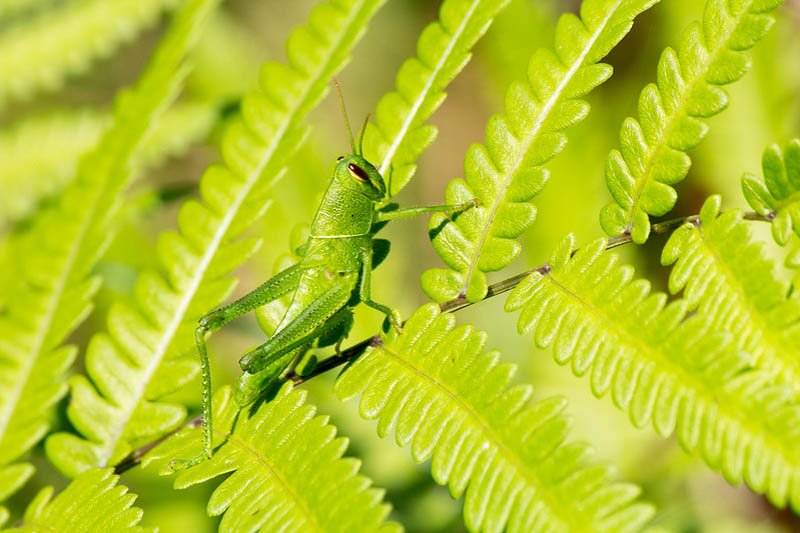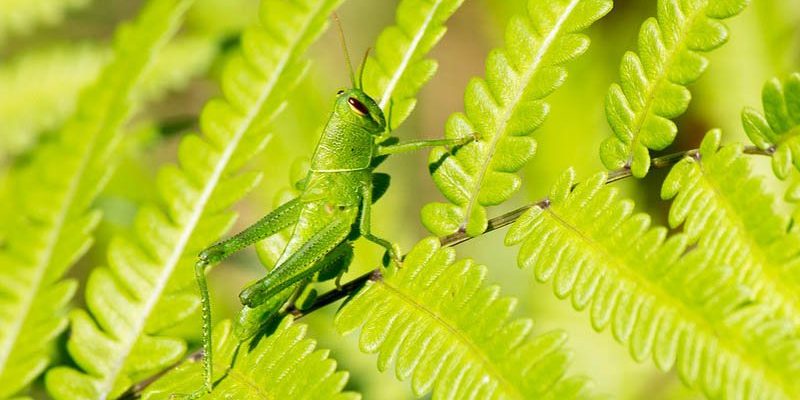
From their remarkable adaptability to their unique life cycles, these little jumpers are more than just pests in your backyard. So, grab a cup of coffee, sit back, and let me share some surprising and delightful insights about grasshoppers.
1. Grasshoppers Are Masters of Camouflage
You might not notice them right away, but grasshoppers are experts at blending into their surroundings. Their green or brown exoskeletons allow them to merge seamlessly with grass, leaves, and twigs, making them hard to spot by hungry predators. Honestly, it’s like nature’s version of hide-and-seek!
This ability to camouflage is a key survival strategy. When they feel threatened, they often stay perfectly still, relying on their surroundings to shield them. Imagine trying to find a needle in a haystack—without your sharp eyes, it might take you a while. That’s what it’s like for birds and other predators trying to spot these crafty critters.
2. They Have Unique Mouthparts for Chewing
Ever wondered how grasshoppers munch on tough vegetation? They have specially adapted mouthparts that are perfect for their diet. Their jaws are strong and designed like scissors, allowing them to efficiently cut through plant material. To put it simply, they’re nature’s little herbivores with a powerful bite!
Grasshoppers primarily feed on grass, leaves, and even some fruits and vegetables. The way they graze is almost like you savoring a delicious meal. They nibble here and there, making sure they’re getting the most out of their food. This munching not only sustains them but also plays a role in shaping their ecosystem.
3. Grasshoppers Are Strikingly Diverse
Did you know there are over 11,000 species of grasshoppers around the world? That’s right! They come in a variety of colors, sizes, and even habitats. Some prefer dry environments, while others thrive near water. It’s like a big family reunion where everyone has their own unique traits.
For example, the desert locust can swarm in massive numbers, forming one of the most infamous plagues in history. On the other hand, you might spot a smaller, brightly colored grasshopper in your garden. They all play important roles, whether as prey or as part of the plant-eating community.
4. They Communicate Through Sound
You might think that only birds and frogs can sing, but grasshoppers have their own way of making music too! They produce sounds through a process called *stridulation*, which is essentially rubbing their wings together. It’s like they’re playing a tiny violin in the grass!
These sounds are used to attract mates or warn off rivals. Imagine a concert out in the wild, where each grasshopper is trying to outdo the other to catch the ear of a potential partner. And here’s the cool part: different species produce different sounds, almost like having their own unique musical signature.
5. They’re Not Just for Grass
While you might think of grasshoppers as solely grass-eating insects, they have a more varied diet than you’d expect. They can munch on various plants and have even been known to nibble on crops. This can sometimes lead them to be seen as pests, especially by farmers trying to protect their harvests.
Interestingly, grasshoppers also contribute positively to their ecosystems. They help in *decomposing plant matter and recycling nutrients*, which benefits the soil. So, while they might not always be welcome guests in your vegetable garden, their role is essential in nature.
6. They Have an Incredible Jumping Ability
Grasshoppers are renowned for their impressive jumping skills. Did you know they can leap up to 20 times their body length in one bound? That’s equivalent to a human jumping the length of a basketball court—pretty amazing, right?
Their hind legs are powerful and designed for propulsion. It’s like having a built-in trampoline! This ability helps them escape predators quickly and move around their environment efficiently. So, next time you see a grasshopper take off, remember, it’s all about that powerful jump!
7. They Go Through Fascinating Life Stages
Grasshoppers have a unique life cycle that includes three stages: egg, nymph, and adult. The eggs hatch into nymphs, which look like miniature versions of adult grasshoppers. They don’t have wings yet, so they spend time eating and growing until they molt into their adult form.
This process of molting is quite interesting. As nymphs grow, they shed their exoskeletons multiple times, much like a snake. This growth phase can last several weeks, depending on the species and environmental conditions. It’s a remarkable transformation that showcases the resilience and adaptability of these insects.
8. Grasshoppers Influence Agriculture
While grasshoppers can be seen as pests, they also play a role in agriculture and ecosystems. They are important for *pollination* and act as food for various animals, including birds, reptiles, and even some mammals. Without them, many ecosystems would feel the impact.
Farmers often have to balance their management of grasshopper populations, using techniques that keep them in check while allowing them to fulfill their ecological role. It’s a delicate dance that highlights the interconnectedness of all living things.
9. They Can Feel the World Around Them
Grasshoppers are equipped with *sensitive antennae* that help them sense their environment. These antennae detect smells, vibrations, and even changes in the air around them. It’s like having a radar system, allowing them to react quickly to threats or food sources.
This heightened sense of awareness is crucial for their survival. It helps them find mates, avoid predators, and navigate their habitat effectively. They might seem small, but their world is rich with sensations that guide their every move.
10. They Play a Role in Climate Change Research
Believe it or not, scientists study grasshoppers to understand more about climate change and its effects on ecosystems. Since they are sensitive to changes in temperature and weather patterns, observing their behaviors can provide insights into broader environmental shifts.
By analyzing how grasshopper populations respond to climate changes, researchers can learn about the impacts on agriculture and natural ecosystems. This highlights the importance of even the smallest creatures in understanding our world.
In conclusion, grasshoppers are far more fascinating than we might think at first glance. From their incredible jumping ability to their adaptability in the environment, these little insects play significant roles in nature and provide valuable insights to scientists. The next time you hear that familiar chirping in the grass, remember that there’s a whole world of wonder just beneath your feet, waiting to be discovered!

